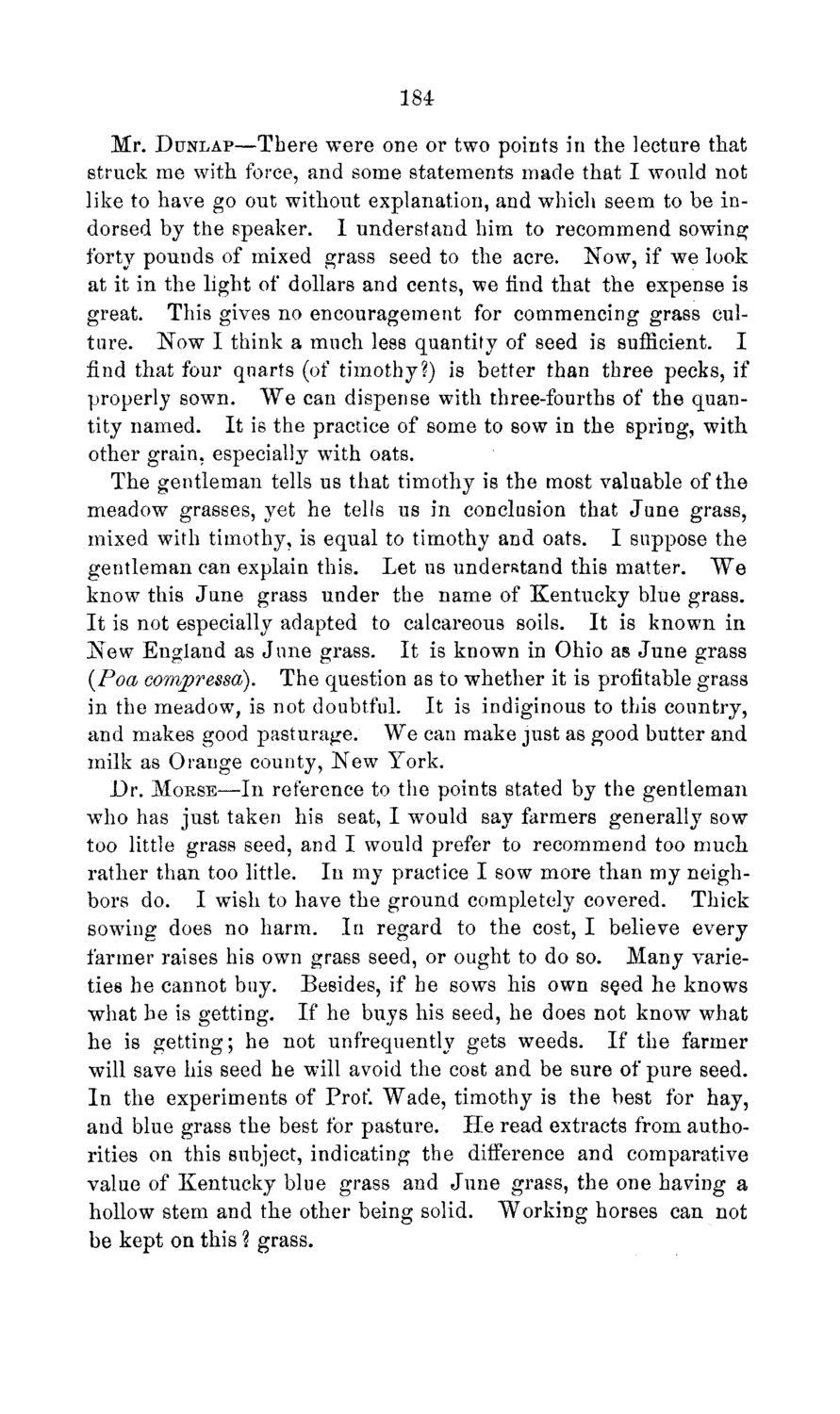| |
| |
Caption: Board of Trustees Minutes - 1869
This is a reduced-resolution page image for fast online browsing.

EXTRACTED TEXT FROM PAGE:
184 Mr. DUNLAP—There were one or two points in the lecture that struck me with force, and some statements made that I would not like to have go out without explanation, and which seem to be indorsed by the speaker. 1 understand him to recommend sowing forty pounds of mixed grass seed to the acre. Now, if we look at it in the light of dollars and cents, we find that the expense is great. This gives no encouragement for commencing grass culture. Now I think a much less quantity of seed is sufficient. I find that four quarts (of timothy?) is better than three pecks, if properly sown. We can dispense with three-fourths of the quantity named. It is the practice of some to sow in the spring, with other grain, especially with oats. The gentleman tells us that timothy is the most valuable of the meadow grasses, yet he tells us in conclusion that June grass, mixed with timothy, is equal to timothy and oats. I suppose the gentleman can explain this. Let us understand this matter. W e know this June grass under the name of Kentucky blue grass. It is not especially adapted to calcareous soils. It is known in New England as June grass. It is known in Ohio as June grass (Poa corrvpressa). The question as to whether it is profitable grass in the meadow, is not doubtful. It is indiginous to this country, and makes good pasturage. We can make just as good butter and milk as Orange county, New York. Dr. MORSE—In reference to the points stated by the gentleman who has just taken his seat, I would say farmers generally sow too little grass seed, and I would prefer to recommend too much rather than too little. In my practice I sow more than my neighbors do. I wish to have the ground completely covered. Thick sowing does no harm. In regard to the cost, I believe every farmer raises his own grass seed, or ought to do so. Many varieties he cannot buy. Besides, if he sows his own s§ed he knows what be is getting. If he buys his seed, he does not know what he is getting; he not unfrequently gets weeds. If the farmer will save his seed he will avoid the cost and be sure of pure seed. In the experiments of Prof. Wade, timothy is the best for hay, and blue grass the best for pasture. He read extracts from authorities on this subject, indicating the difference and comparative value of Kentucky blue grass and June grass, the one having a hollow stem and the other being solid. Working horses can not be kept on this ? grass.
| |